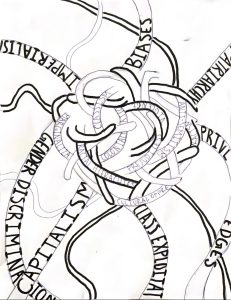Trump Proposes Cuts to Food Security Programs
April 25, 2018
Each year, over 45 million Americans receive assistance from the Supplemental Nutrition Assistance Program (SNAP), formerly known as “food stamps.” This government “safety net” program provides low-income citizens with electronic benefit transfer (EBT) cards, which function like debit cards and allow people to purchase groceries and food products at supermarkets. However, President Trump has a new plan in mind; the Trump administration has made a new proposal in which half of the SNAP benefits would come from a “food package.”
The proposal was recommended by the Trump administration for 2019 fiscal year budget plans and requires approval from Congress. This change would cut the SNAP budget by over $213 million, nearly a 30% reduction. The Trump administration wants to save money by sending prepackaged boxes of food out to SNAP recipients.
Additionally, Trump wants to cut over four million people from the program, which would trim the budget by an additional $80 million.
If Trump were to follow through with his plan in 2019, SNAP beneficiaries would receive what the administration is calling “Harvest Boxes,” which would contain shelf-stable milk, cereal, pasta, peanut butter, beans, and canned fruits and vegetables.
One of the benefits of the current SNAP program is that it allows recipients to have purchasing power at their local supermarkets. This is important for citizens, according to Ashia Auborg, CRLS alumna and founder of Foodies Empowering Environments Dynamically (FEED), a summer program for high school students to combat food justice issues.
Aubourg states, “[Trump’s Harvest Box proposal] would take away dignity from participants… People that are using SNAP are already in difficult situations, which is why they are depending on the government benefit in the first place. It is inhumane to want to make people feel even worse about their situation by providing them with an inadequate, pre-chosen box of food.”
These programs, supported by local and state governments, allow people who are low-income to have purchasing power at their own markets.
The Trump administration’s plan would prevent low-income people from having the same privileges as people who are not dependent on SNAP and takes away money from a government safety net program.
While it is not likely that the “Harvest Box” plan will pass in Congress, other Massachusetts- based food justice programs have received cuts, especially HIP, the Healthy Incentive Program.
HIP helps SNAP users double their purchasing powers when they buy fresh produce at food stands, farmers markets’, mobile markets, and community supported agriculture (CSA) farm share programs. For different household sizes, the HIP program gives families different amounts of money. When SNAP users purchase produce with their EBT cards at these locations they are reimbursed by the HIP initiative.
However, due to the high success of this program, the initiative is close to running out of money. Last spring, the organizers of HIP thought they had enough money for a pilot of three years. However, now, less than a year later, the group is in need of more money. In April, HIP will be suspended until July because of their budget crisis, and in this waiting period, the organization is trying to raise $6.2 million to keep it going for another three years.
Here in Cambridge, there is a similar program called SNAP Match. SNAP Match allows low-income Cambridge residents to double their purchasing power at the Harvard University Farmers’ Market, the Central Square Farmers’ Market, and the Cambridge Winter Farmers’ Market. For every $15 a SNAP user spends at the farmers’ market, they can get up to $30 in farm fresh produce.
Aubourg’s summer program F.E.E.D. worked specifically last summer on promoting SNAP Match in every affordable housing complex in Cambridge. In future summers she hopes to work more with HIP, because “[HIP] tackled two pressing issues: making farmers’ markets more affordable, and putting more money into our small farmer’s pockets.”
This piece also appears in our March/April print edition.









